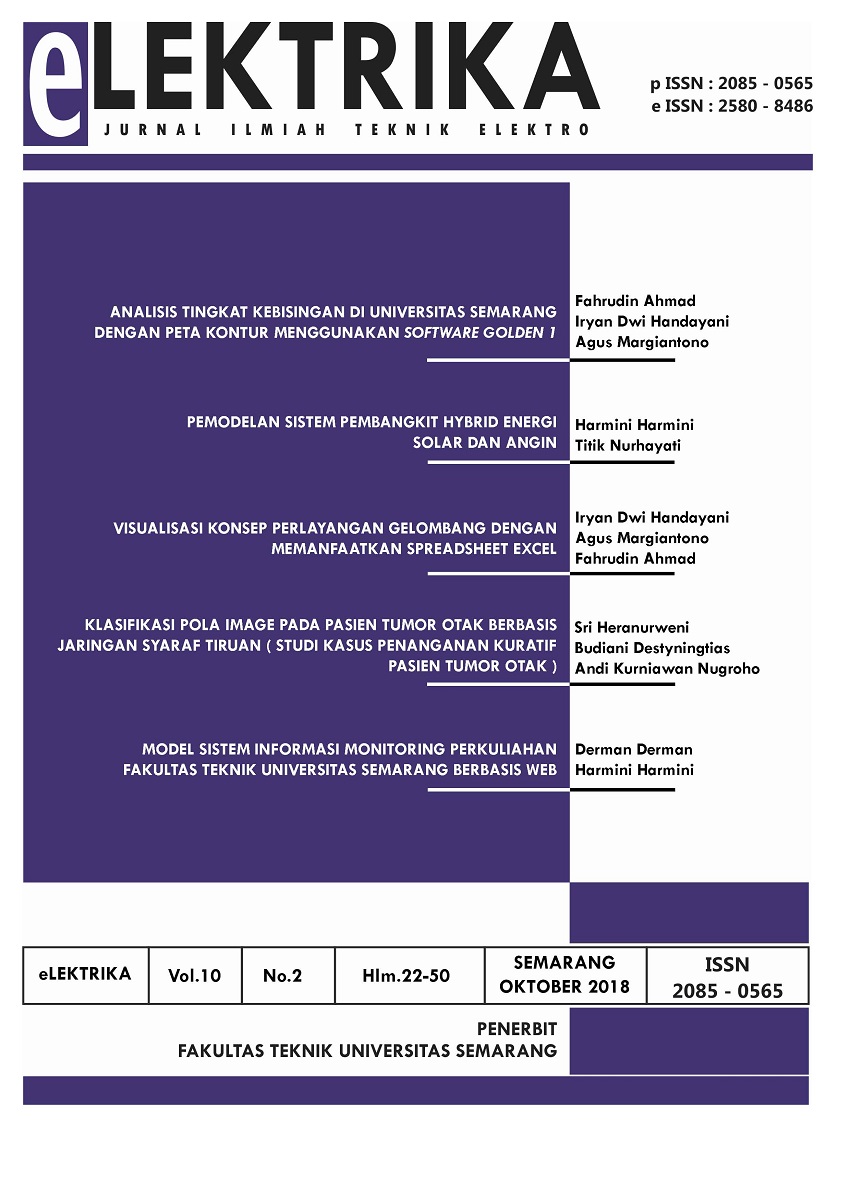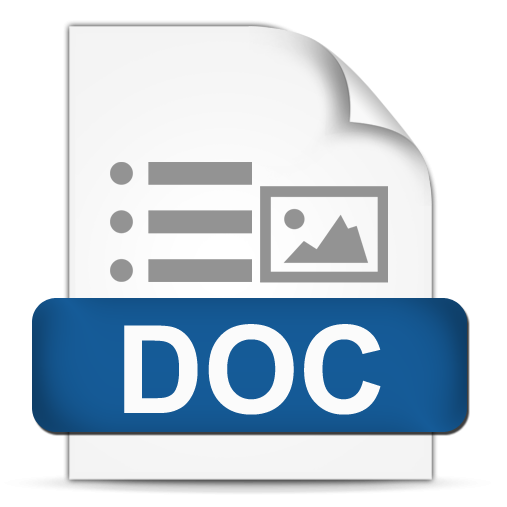MODEL SISTEM INFORMASI MONITORING PERKULIAHAN FAKULTAS TEKNIK UNIVERSITAS SEMARANG BERBASIS WEB
DOI:
https://doi.org/10.26623/elektrika.v10i2.1260Keywords:
Monitoring, Semarang University, WebAbstract
The development of Information Technology is increasingly demanding that Higher Education to provide information quickly to meet the needs of Information and Monitoring Course for Lecturers, Students and Admin staff. This study aims to design a Model Information System and Monitoring Course at the Faculty of Engineering, University of Semarang Web-based. Coverage includes lecture planning, lecturing, evaluation of lecturing, control of lecturing and improvement of lecture planning. This research produces an application of Information System and Monitoring model of lecturing which aims to facilitate and accelerate the preparation of time, room and course schedule and ease in monitoring the attendance status of lecturers in class either to students or other parties in real time without having to come to campus check board information . The contribution of this research results will greatly affect the application of science and technology for higher education institutions and to realize the development of Faculty of Engineering Semarang University as a leading Faculty in 2023. The method used is dynamic priorities method which prioritizes the process that has the highest
priority and is able to respond to changes in the system environment operate. Modeling the system using XAMPP package in which integrated MySQL module for database purposes, PHP for management of information systems, and Apache for simulation purposes. The results showed the implementation of the application of Information Systems Monitoring System Lectures Faculty of Engineering, University of Semarang goes well.
Downloads
References
Agung, Gregorius. Membuat Homepage Interaktif Dengan CGI-Perl . Jakarta: PT. Elex Media Koputindo. 2000.
Supriyanto, Aji. Pengantar Teknologi Informasi . Jakarta: Salemba Infotek. 2005.
Al-Bahra bin Ladjamudin. Analisis dan Desain Sistem Informasi . Yogyakarta : Graha Ilmu. 2005.
Arief, M.Rudianto. Pemrograman Web Dinamis Menggunakan PHP dan MySQL . Yogyakarta: Andi. 2011.
Hakim, Lukmanul. Cara Cerdas Menguasai Layout, Desain dan Aplikasi Web . PT. Elekx Media Komputindo: Jakarta. 2004.
Hartono, Jogiyanto. Sistem Teknologi Informasi. Edisi II. Yogyakarta: Andi Offset. 2005.
Hartono, Jogiyanto. Pengenalan Komputer . Yogyakarta : Andi. 2000.
Hidayat, Muhamad Taufik. Rancangan Perangkat Lunak Penjadwalan Perkuliahan di Jurusan Teknik Industri ITENAS . Jurnal Online Institut Teknologi Nasional No.011Vol.01. ISSN: 2338-5081. Januari 2014.
Kadir, Abdul. Dasar Pemrograman WEB Dinamis menggunakan PHP . Yogyakarta: Andi. 2002.
Mansur. Perancangan Sistem Informasi Penjadwalan Resource Perguruan Tinggi Menggunakan Metode Particle Swarm Optimization (PSO) . Inovtek, Volume 4 No. 2, halaman. 75 €” 86. Oktober 2014,
Nugroho, Adi. E-commerce . Informatika Bandung. Bandung. 2006.
Pusat Pembinaan dan Pengembangan Bahasa (P3B), Departemen Pendidikan dan Kebudayaan. Kamus Besar Bahasa Indonesia . Jakarta.1983
Sanjaya, Ginanjar Tegar. Rancang Bangun Aplikasi Penjadwalan Kuliah STMIK A UB Surakarta Berbasis Web . Jurnal Ilmiah Go Infotech Volume 21 No. 1, Juni 2015 ISSN : 1693-590x. 2015.
Usada, Elisa. Rancang Bangun Sistem Informasi Jadwal Perkuliahan Berbasis Jquery Mobile Dengan Menggunakan PHP dan MySQL . Jurnal INFOTEL (Informatika, Telekomunikasi & Elektronika) Vol 4 No.2. pISSN:2085-3688. 2012
Downloads
Published
Issue
Section
License
Authors who publish this journal agree to the following terms:
The author owns the copyright and grants the journal the first publication rights with the work simultaneously licensed under the Creative Commons Attribution 4.0 International License which allows others to share the work with recognition of the authorship of the work and initial publication in the journal.
Authors may enter into separate additional contractual agreements for non-exclusive distribution of the published journal version of the work (e.g., posting it to an institutional repository or publishing it in a book), in recognition of its initial publication in this journal.
Authors are allowed and encouraged to post their work online (e.g., in institutional repositories or on their websites) before and during the submission process, as it can lead to productive exchanges, as well as earlier and larger citations of published works (See The Effects of Open Access).

This work is licensed under the Creative Commons Attribution 4.0 International License.











